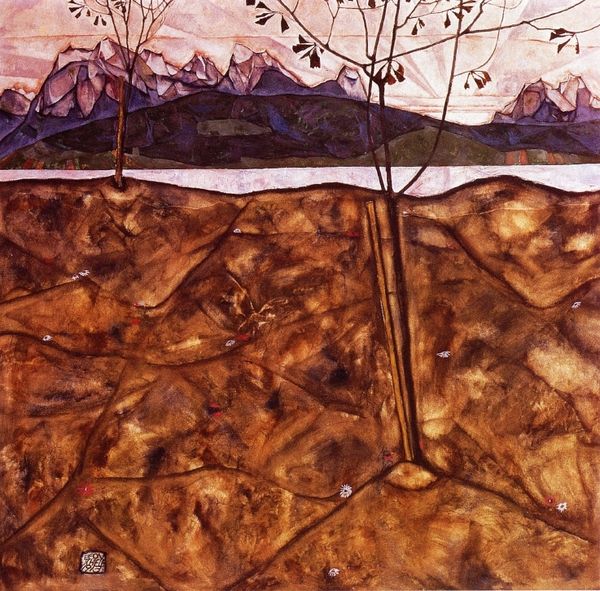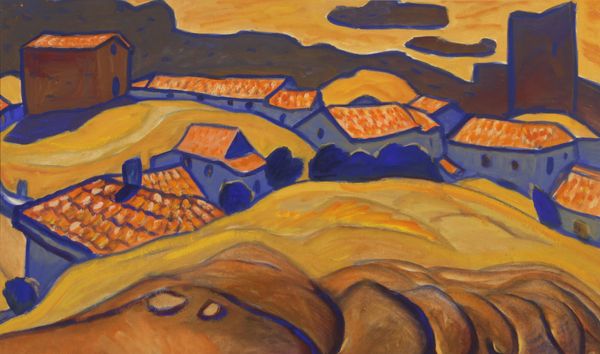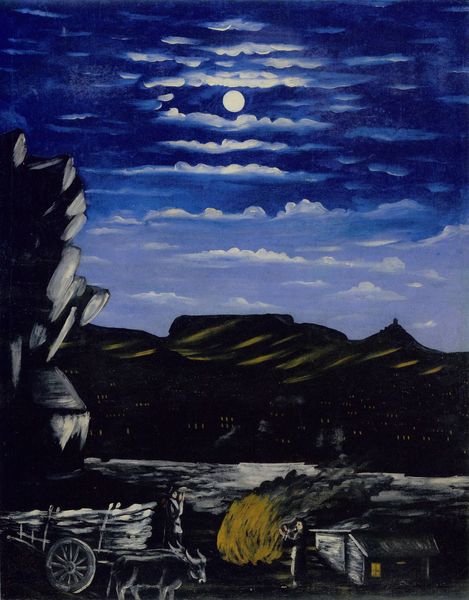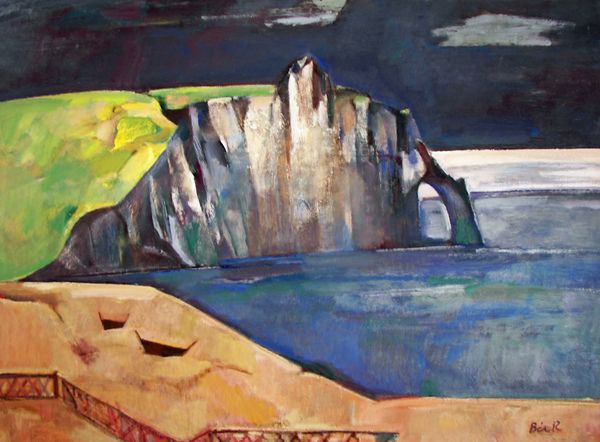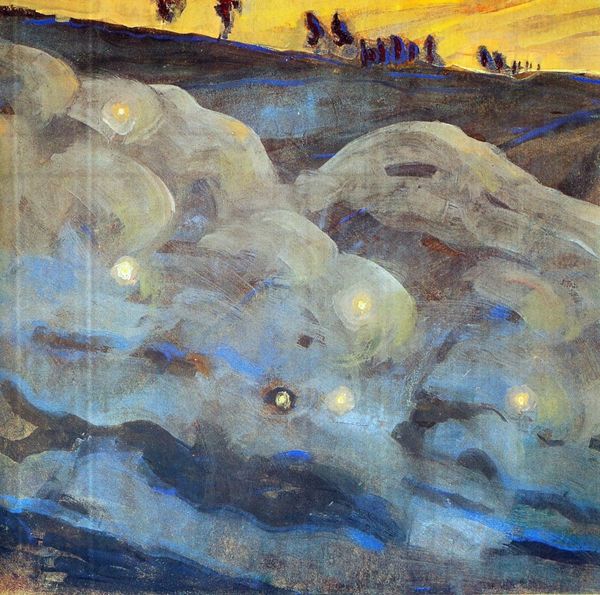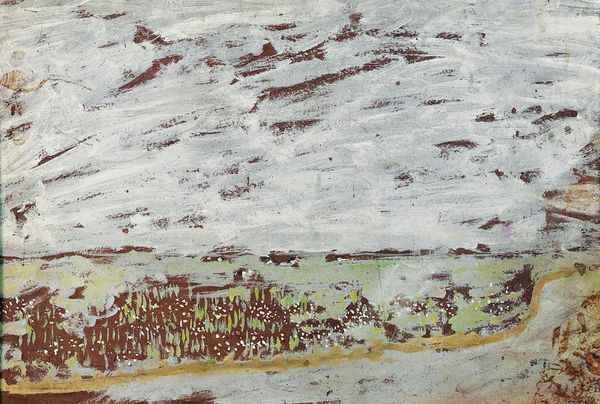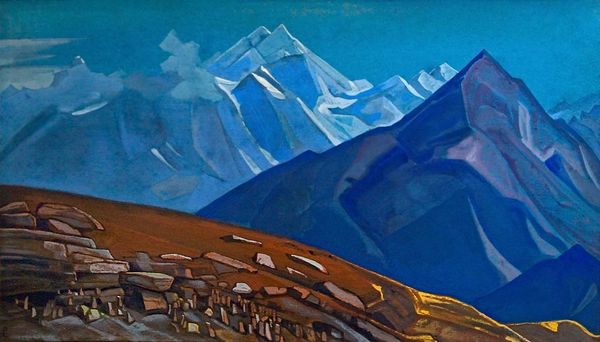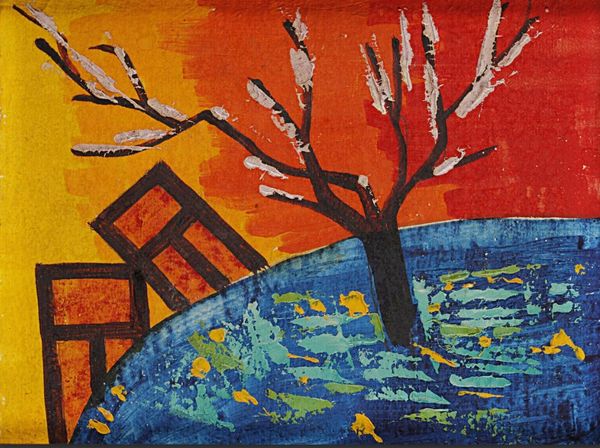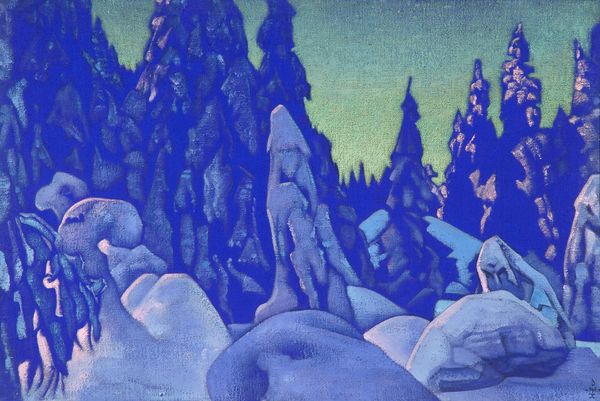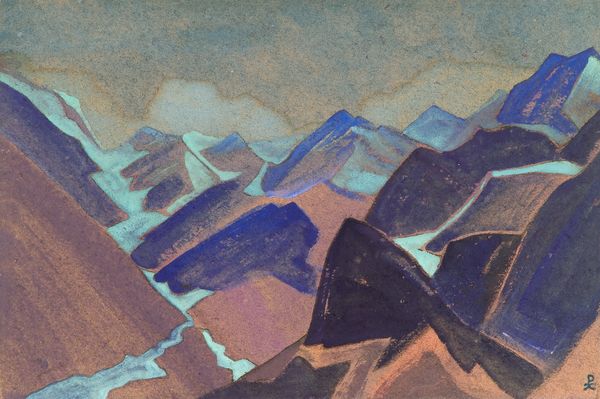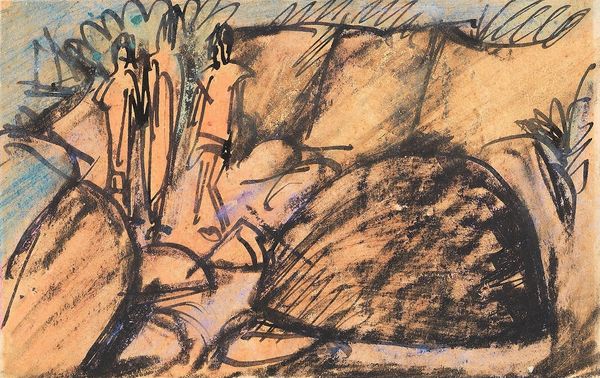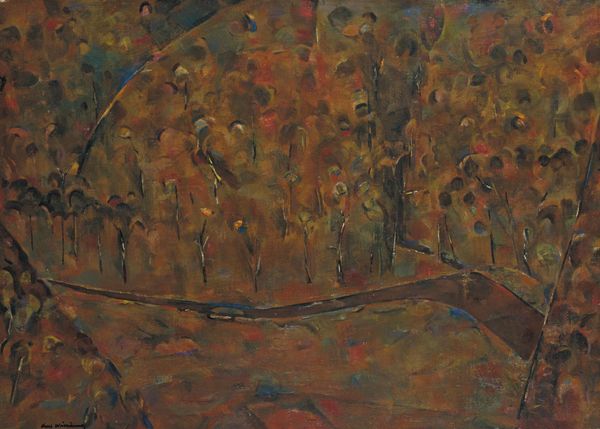
#
abstract painting
#
painted
#
possibly oil pastel
#
oil painting
#
rock
#
acrylic on canvas
#
street graffiti
#
underpainting
#
paint stroke
#
painting painterly
#
watercolor
Copyright: Public domain US
Curator: Looking at A.Y. Jackson’s "Night Pine Island," created around 1921, one is immediately struck by the solitary stillness he’s captured. Editor: It’s definitely a landscape steeped in quiet. I sense a stark, almost mournful quality, even with the starry sky hinting at hope. It speaks to the Canadian identity perhaps? The ruggedness, the isolation… Curator: It’s fascinating how Jackson distills the essence of the Canadian Shield into such a potent symbol. The gnarled pines silhouetted against the night sky, for instance – they evoke endurance and resilience. Editor: Absolutely. The pines become these stoic figures, bearing witness to something. The water is reflecting, perhaps the turmoil beneath that apparent tranquility, but even there is a sense of it all settling over time. Are there links to indigenous presence in the land? Curator: The Canadian landscape has been fundamental for the spiritual identity of its indigenous populations. Although not explicitly present here, the composition taps into the sense of ancestral presence felt in the Canadian nature and the concept of cyclical existence, that is echoed in Jackson’s paintings. Editor: How do we then approach that intersection? It's hard to divorce that historical understanding when examining how Canada portrays its land, the ownership of space, even in a space seemingly vacant as it may seem in “Night Pine Island." Curator: This makes me think of the psychological aspect. What draws Jackson back again and again to paint images of solitary trees on islands, it is perhaps an act of inner mapping of sorts? Jackson is mapping his relationship to this landscape. Editor: That makes sense. It becomes a projection of the internal state, intertwined with the socio-political circumstances of that land at the time, too. It goes beyond just aesthetic appreciation, but a record of complex human-environmental interactions, a reflection on nationhood even. Curator: Agreed. The painting's not merely a picturesque scene, but rather, a cultural and personal mirror. It prompts reflections on nature, nationhood, identity, and resilience in the face of isolation and more broadly the meaning of existence itself. Editor: It leaves you thinking, doesn’t it? It is both calming and quietly unsettling all at once; the mark of successful artwork reflecting how the land it depicts will outlive all the people in it.
Comments
No comments
Be the first to comment and join the conversation on the ultimate creative platform.
